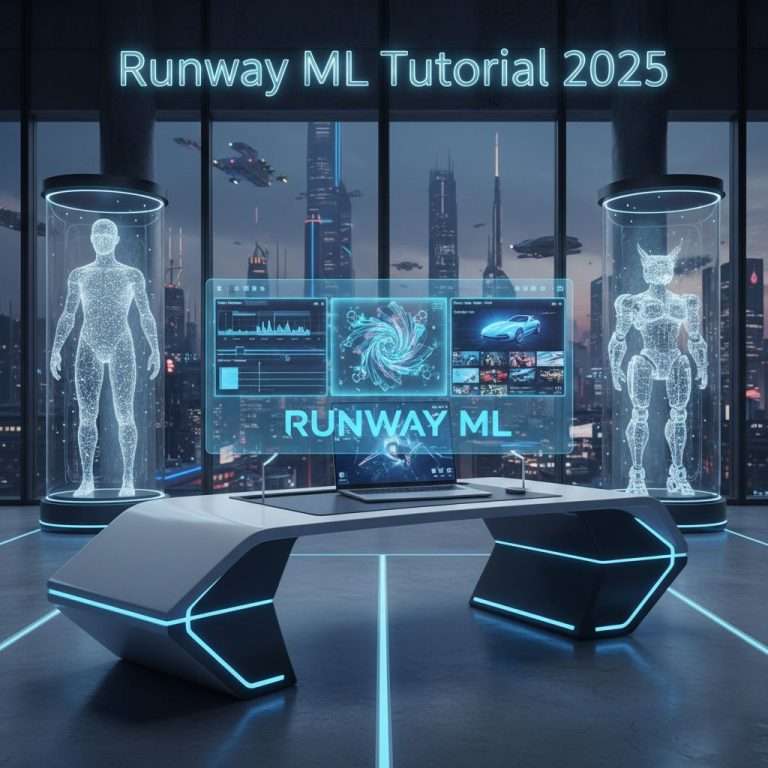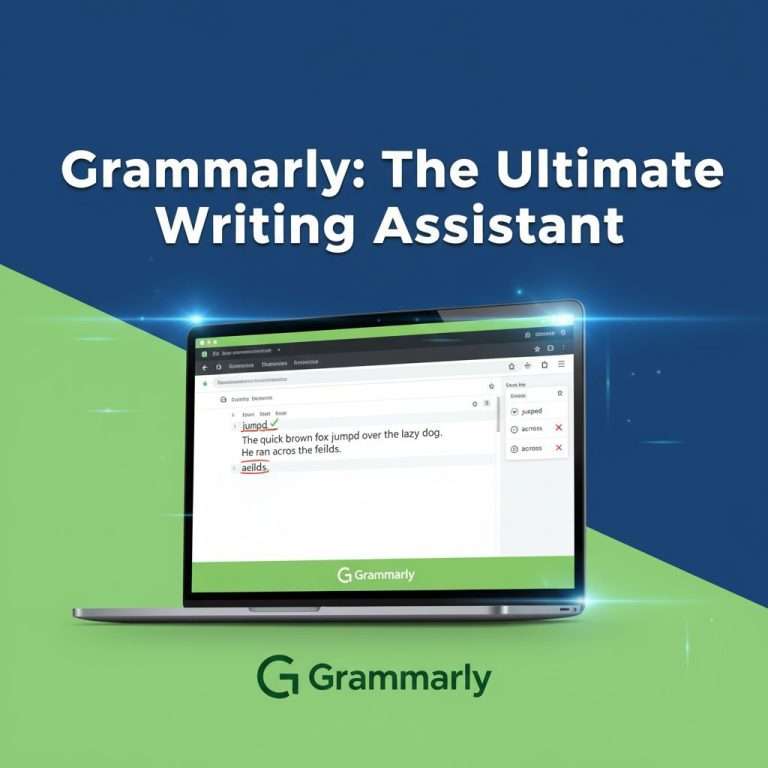What if you could create professional-quality music without playing a single instrument or reading sheet music? Suno AI is making this possible by revolutionizing how we create and interact with music technology, offering next-level AI-generated songs and audio composition. In this Suno AI Tutorial 2025, we’ll explore how you can leverage this powerful tool for your own creative projects, whether you’re a content creator, musician, or business owner looking to enhance your brand with custom audio.
Throughout this guide, you’ll discover how to use Suno AI, its key features, real-world applications, and what sets it apart from other AI tools in the market. Moreover, we’ll dive into advanced techniques that will help you maximize the potential of this groundbreaking platform.
What Is Suno AI and How Does It Work?

Suno AI is a cutting-edge artificial intelligence platform designed specifically for music and audio generation. Unlike traditional music production software that requires extensive musical knowledge, Suno AI uses advanced machine learning algorithms to create original songs, melodies, and audio content from simple text prompts.
At its core, Suno AI leverages natural language processing (NLP) and deep learning neural networks trained on vast datasets of musical compositions across multiple genres. According to research from MIT Technology Review, generative AI models are transforming creative industries by enabling unprecedented accessibility to professional-grade content creation. When you provide a text description, Suno AI analyzes your input and generates complete songs with vocals, instrumentals, and production quality that rivals human-created music.
The platform works through a sophisticated process. First, Suno AI interprets your creative vision through text prompts. Then, it synthesizes musical elements including melody, harmony, rhythm, and lyrics. As a result, users receive fully produced tracks within minutes. The technology behind Suno AI represents years of research in generative AI, audio synthesis, and music theory, building on foundations described in Nature’s research on AI and creativity.
In addition, Suno AI continuously learns and improves its output quality through user interactions and feedback. The platform’s architecture allows it to understand musical context, genre conventions, and stylistic nuances that make each generated piece unique and authentic.
Key Features of Suno AI in 2025
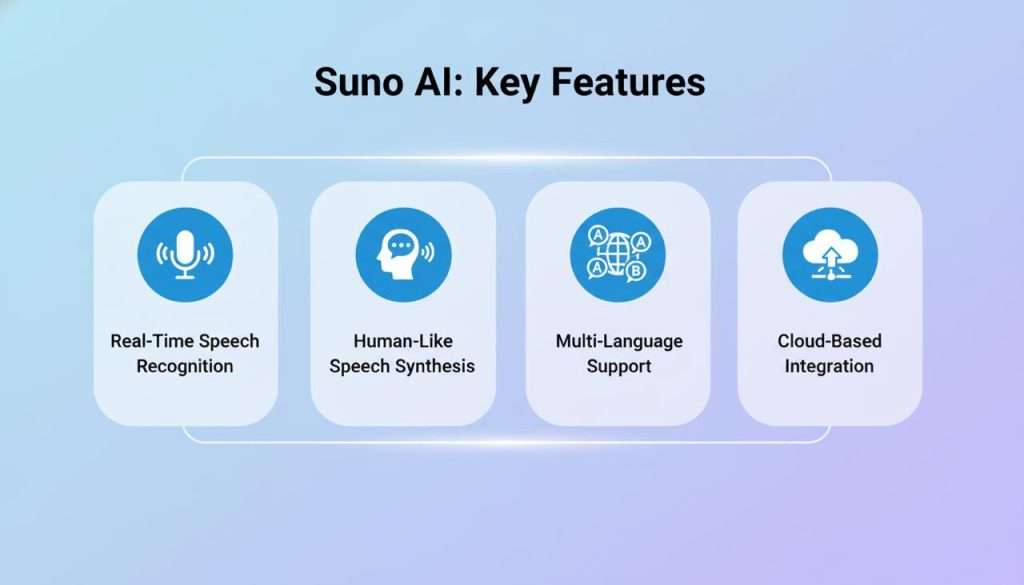
Suno AI has evolved significantly, offering an impressive array of features that make it the go-to platform for AI music generation:
- Text-to-Music Generation: Create complete songs from simple text descriptions, allowing anyone to become a music creator
- Multi-Genre Support: Generate music across dozens of genres including pop, rock, jazz, electronic, classical, and experimental styles
- Custom Lyrics Integration: Provide your own lyrics or let Suno AI generate them based on your theme and mood
- High-Quality Audio Output: Receive professional-grade audio files suitable for commercial use and distribution
- Voice Synthesis Technology: Generate realistic vocal performances with various voice types and singing styles
- Instrumental Customization: Choose specific instruments and production styles for your tracks
- Extend and Remix Features: Continue existing songs or create variations of generated music
- Commercial Licensing Options: Pro plans include rights for commercial use of your Suno AI creations
- Fast Generation Speed: Create full songs in under two minutes with Suno AI’s optimized processing
- User-Friendly Interface: Intuitive design makes Suno AI accessible to beginners and professionals alike
Furthermore, Suno AI offers seamless integration capabilities, allowing creators to export their music directly to popular platforms and digital audio workstations (DAWs).
How to Get Started with Suno AI (2025 Tutorial)
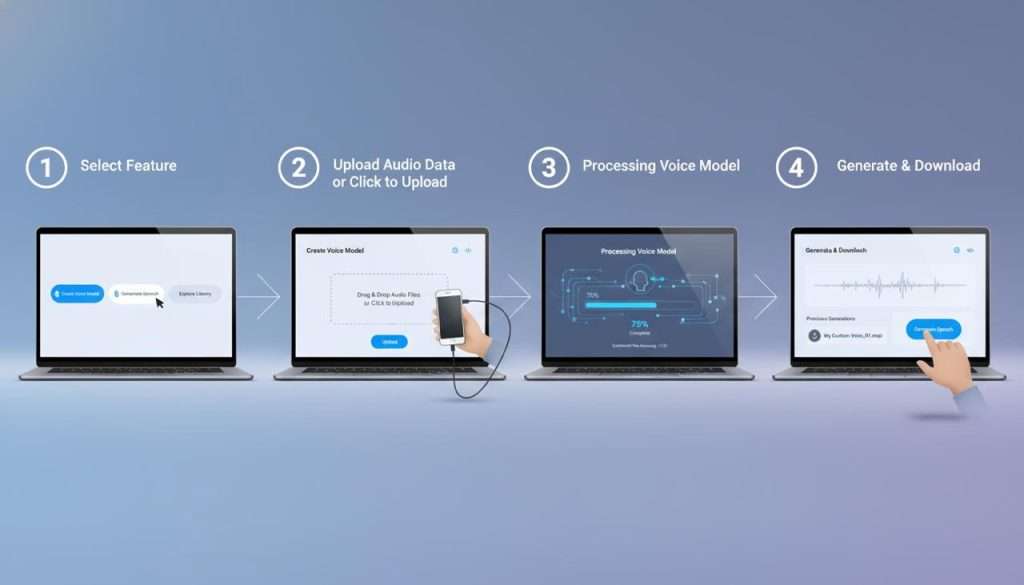
Getting started with Suno AI is straightforward. Here’s your comprehensive step-by-step guide:
Step 1: Sign Up for Suno AI Visit the official Suno AI website and create your account. The platform offers both free and premium tiers. New users can explore Suno AI’s capabilities with the free plan, which provides limited monthly credits for song generation.
Step 2: Familiarize Yourself with the Interface Once logged in, explore the Suno AI dashboard. The main interface features a text prompt box where you’ll describe your desired music. Additionally, you’ll find your music library, generation history, and account settings.
Step 3: Craft Your First Prompt The key to success with Suno AI lies in writing effective prompts. Start simple: “Create an upbeat pop song about summer adventures.” Suno AI will interpret this and generate a complete track. For better results, include details about tempo, mood, instruments, and vocal style.
Step 4: Generate Your Music Click the generate button and wait while Suno AI creates your song. The platform typically produces two variations per prompt, allowing you to choose your favorite. Each generation uses credits from your account allocation.
Step 5: Refine and Iterate Not satisfied with the first result? Suno AI allows you to regenerate with modified prompts. Experiment with different descriptions until you achieve your desired outcome. Moreover, you can use the “extend” feature to continue songs or create longer versions.
Step 6: Download and Use Your Creation Once satisfied, download your Suno AI generated music in high-quality audio formats. Premium subscribers can use these tracks commercially, making Suno AI ideal for content creators, businesses, and artists.
Suno AI vs Other AI Tools (e.g., GPT, Midjourney)
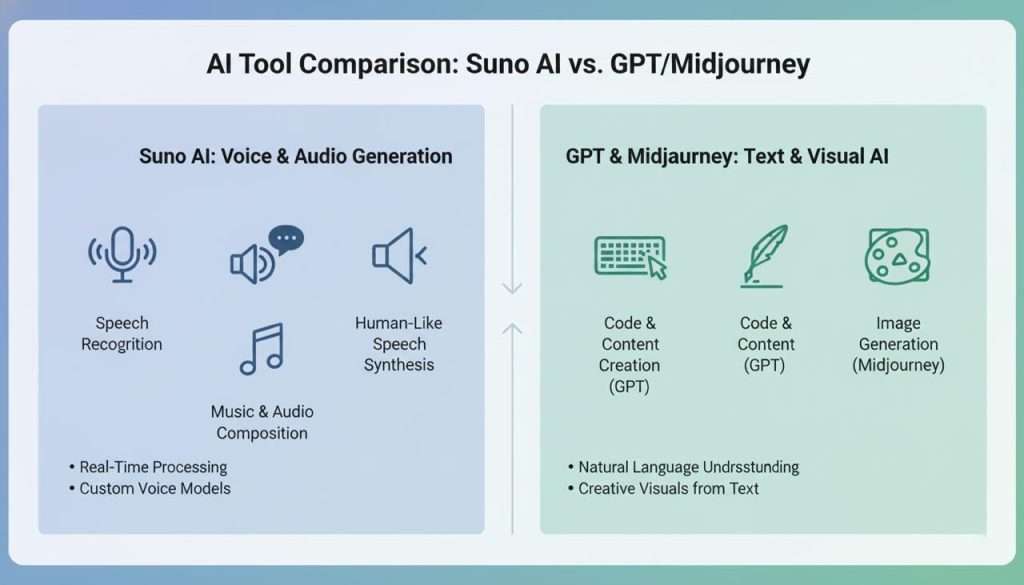
Understanding how Suno AI compares to other popular AI platforms helps you choose the right tool for your needs:
Suno AI vs GPT: While GPT excels at text generation and conversational AI, Suno AI specializes exclusively in music creation. GPT can write about music or generate lyrics, but Suno AI produces actual audio files with complete musical arrangements. The two platforms serve complementary purposes.
Suno AI vs Midjourney: Midjourney focuses on visual art generation, creating images from text prompts. In contrast, Suno AI generates audio content. Content creators often use both—Suno AI for soundtracks and Midjourney for visual assets.
Suno AI vs Gemini: Gemini is Google’s multimodal AI assistant capable of processing text, images, and code. However, Suno AI offers specialized music generation capabilities that Gemini doesn’t match. For music creation specifically, Suno AI remains the superior choice.
Suno AI vs Perplexity: Perplexity functions as an AI-powered search engine and research tool. Suno AI, on the other hand, creates original music content. These platforms serve entirely different use cases, though both leverage advanced AI technology.
Suno AI vs Synthesia: Synthesia generates AI videos with synthetic presenters. While Synthesia creates visual content with narration, Suno AI produces music and songs. Together, they enable complete multimedia content creation without traditional production resources.
Real-World Applications of Suno AI

Suno AI has transformed workflows across numerous industries:
Media & Entertainment: Content creators use Suno AI to generate custom background music for YouTube videos, podcasts, and streaming content. The platform eliminates licensing concerns and costs associated with royalty-free music libraries. Additionally, filmmakers create original soundtracks with Suno AI for independent projects. TechCrunch highlights how AI music generation is revolutionizing content creation workflows for digital creators.
Marketing & Advertising: Brands leverage Suno AI to develop unique audio identities and jingles. Creating custom music with Suno AI costs significantly less than hiring composers and studios. As a result, small businesses can now afford professional-quality brand music.
Gaming Industry: Game developers use Suno AI to generate adaptive soundtracks and ambient music. The platform’s ability to create variations makes it perfect for procedurally generated game environments where Suno AI provides endless musical diversity.
Education & Training: Educational platforms integrate Suno AI generated music for learning materials, making lessons more engaging. Teachers create custom songs to help students memorize information through musical mnemonics.
Social Media Content: Influencers and social media managers use Suno AI to create trending audio clips and unique sounds for their content. The platform helps creators stand out with original music that can’t be found elsewhere.
Therapeutic Applications: Music therapists experiment with Suno AI to create personalized therapeutic soundscapes tailored to individual patient needs, expanding the possibilities of music-based healing.
Advanced Tips and Tricks for Power Users
Maximize your Suno AI experience with these professional techniques:
Prompt Engineering Mastery: Successful Suno AI users craft detailed prompts specifying genre, instruments, tempo (BPM), mood, and vocal characteristics. For example: “Create a melancholic jazz ballad at 80 BPM featuring piano, upright bass, and soft female vocals with lyrics about lost love.”
Style References: Mention musical eras or artist influences in your Suno AI prompts without directly copying. Instead of naming specific artists, describe their style: “Create music with 1980s synthwave production and driving basslines.”
Iterative Refinement: Use Suno AI’s generation history to build upon successful outputs. Save effective prompts and modify them slightly to create cohesive music collections or albums.
Strategic Credit Usage: Plan your Suno AI sessions efficiently. Generate multiple variations simultaneously to compare options, rather than generating songs one at a time.
Hybrid Workflows: Export Suno AI tracks into digital audio workstations (DAWs) for additional editing, mixing, and mastering. This combines AI efficiency with human creative control.
Genre Blending: Experiment with Suno AI by combining unexpected genres: “Create a country-hip-hop fusion with banjo and trap beats.” The platform excels at innovative genre combinations.
Future of Suno AI and Voice Technologies
The trajectory of Suno AI and music AI technology points toward exciting developments:
Enhanced Personalization: Future versions of Suno AI will likely offer voice cloning capabilities, allowing users to generate songs in their own voice or create consistent virtual artists.
Real-Time Generation: As computing power advances, Suno AI may enable live music generation for performances, interactive installations, and gaming applications.
Collaborative AI: Expect Suno AI to introduce features where multiple users can collaborate on AI-generated music projects, combining human creativity with AI capabilities.
Emotional Intelligence: Next-generation Suno AI systems will better understand and convey nuanced emotions, creating music that resonates more deeply with listeners.
Extended Song Lengths: Current Suno AI limitations on song duration will likely expand, enabling full-length compositions, albums, and extended mixes.
However, the rise of platforms like Suno AI also raises important questions about music copyright, artist compensation, and the definition of creativity itself. The industry continues debating how AI-generated music fits into existing legal and ethical frameworks. Forbes reports that the music industry is grappling with these challenges as AI technology rapidly advances.
Common Mistakes to Avoid with Suno AI
Learn from these frequent Suno AI user errors:
Vague Prompts: Generic descriptions like “make me a song” produce unpredictable Suno AI results. Always provide specific details about genre, mood, and style.
Ignoring Copyright Considerations: Understand Suno AI’s terms of service regarding commercial use. Free tier users have different rights than premium subscribers.
Over-Reliance on First Outputs: Don’t settle for the first generation. Suno AI often produces better results on subsequent attempts with refined prompts.
Neglecting the Extend Feature: Many users don’t realize Suno AI can continue or expand existing songs, missing opportunities for longer, more developed compositions.
Unrealistic Expectations: While Suno AI is impressive, it won’t perfectly replicate specific copyrighted songs or exactly match your mental vision every time. Approach it as a creative collaborator rather than a perfect music production slave.
Not Exploring Genre Diversity: Users often stick to one genre. Suno AI excels across musical styles—experiment widely to discover the platform’s full potential.
Suno AI Pricing and Plans
Understanding Suno AI pricing helps you choose the right subscription:
Free Tier: The basic Suno AI plan offers limited credits per month (typically 50 credits, with each song costing 5 credits). Music generated on the free tier is for non-commercial use only. This option lets you explore Suno AI capabilities before committing financially.
Pro Plan ($10/month): Pro subscribers receive approximately 500 credits monthly, allowing around 100 song generations. Additionally, Suno AI Pro members gain commercial usage rights, making this tier suitable for content creators and small businesses.
Premier Plan ($30/month): This Suno AI tier offers 2,000 monthly credits (400 songs) plus priority generation queue access. Premier users benefit from faster processing during peak times.
Enterprise Solutions: For large organizations, Suno AI provides custom enterprise plans with unlimited generation, dedicated support, API access, and tailored licensing agreements.
Credit rollover policies vary, so check Suno AI’s current terms. Most plans don’t allow unused credits to accumulate indefinitely.
FAQs About Suno AI
How accurate is Suno AI’s music generation quality? Suno AI produces remarkably high-quality music that often sounds professionally produced. While results vary based on prompt specificity, most generations achieve production quality suitable for commercial use. The platform continues improving as its models evolve.
Can I use Suno AI for free? Yes, Suno AI offers a free tier with limited monthly credits. However, free tier music is restricted to non-commercial use. For commercial projects, you’ll need a paid Suno AI subscription.
How customizable are the songs in Suno AI? Suno AI offers substantial customization through detailed text prompts. You can specify genre, instruments, mood, tempo, vocal style, and lyrical themes. Moreover, you can extend, remix, and iterate on generated songs for further refinement.
What industries can benefit from Suno AI? Virtually any industry using audio content benefits from Suno AI: advertising, entertainment, gaming, education, podcasting, social media, hospitality, retail, and therapeutic applications all leverage Suno AI for custom music creation.
How does Suno AI ensure data privacy? Suno AI implements industry-standard security measures to protect user data and prompts. The platform’s privacy policy outlines data handling practices. Commercial plans often include additional privacy protections for enterprise users.
Conclusion
Suno AI represents a paradigm shift in music creation, democratizing access to professional-quality audio production. This Suno AI Tutorial 2025 has covered everything from basic setup to advanced techniques, helping you harness the full power of AI-generated music.
Whether you’re a content creator seeking unique soundtracks, a marketer developing brand audio, or simply someone who loves experimenting with music, Suno AI offers unprecedented creative possibilities. The platform continues evolving, adding features and improving quality with each update.
Start your Suno AI journey today by experimenting with different prompts and styles. The learning curve is minimal, but the creative potential is boundless. As AI technology advances, platforms like Suno AI will become increasingly integral to how we create, consume, and think about music.
Don’t just read about Suno AI—experience it. Sign up, generate your first song, and discover how AI can amplify your creative vision in ways previously impossible.
Ready to create your first AI-generated masterpiece? Visit Suno AI and start making music today.
